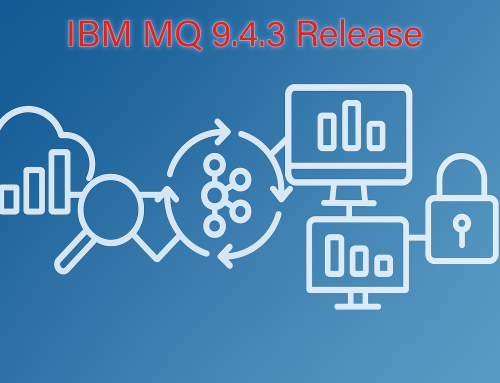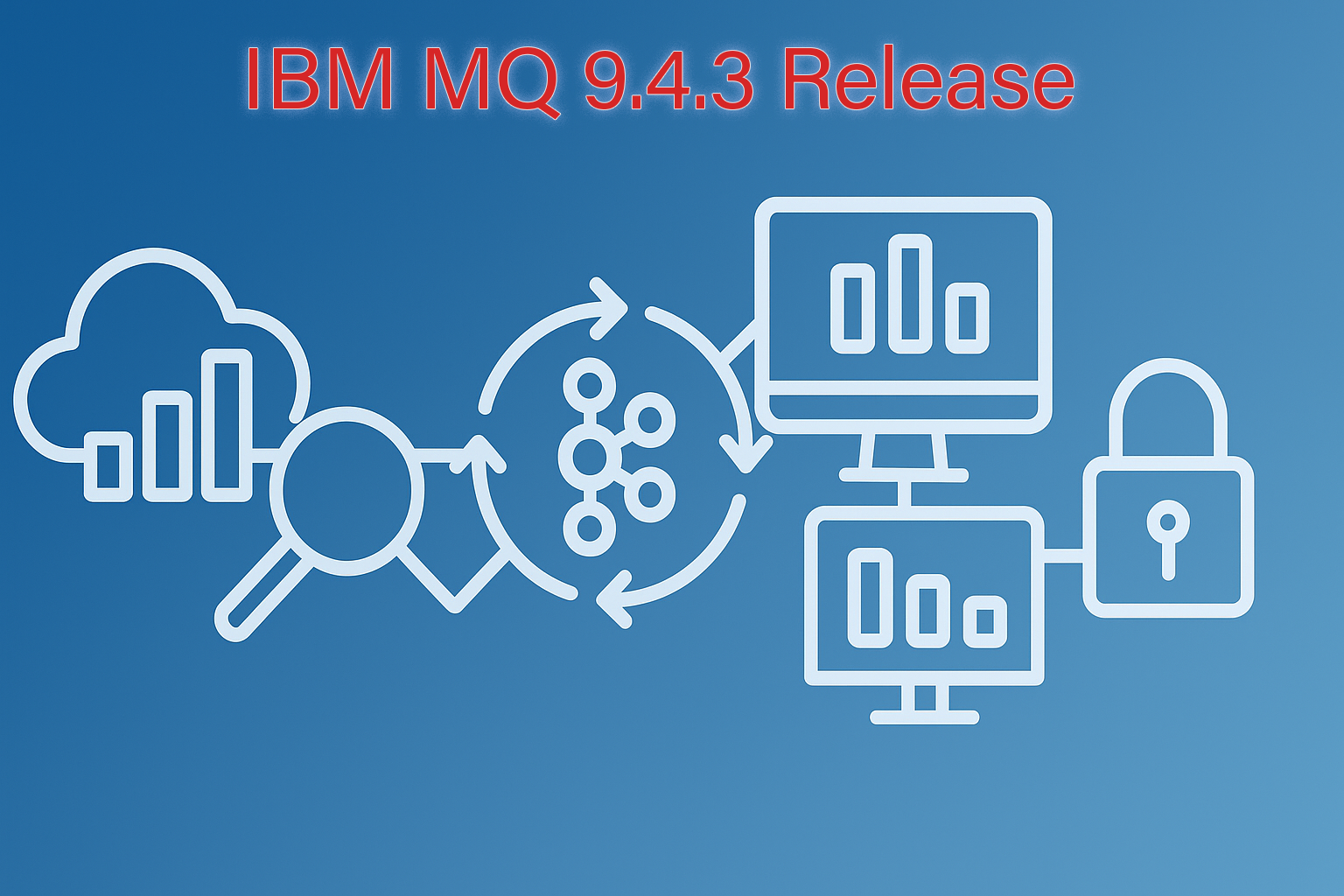- Understanding Synthetic Transactions: Proactive Testing for Robust Systems
- Why Use Synthetic Transactions for ActiveMQ Performance Testing?
- Implementing Synthetic Transactions in ActiveMQ: Best Practices for Success
- Examples of Synthetic Transactions in ActiveMQ: Real-World Applications
- Infrared360: Enhancing Your Synthetic Testing for ActiveMQ
- Conclusion: Proactive Testing for a Robust ActiveMQ Environment
The Crucial Role of Synthetic Transactions in ActiveMQ Performance Testing
Messaging systems are the foundation of many modern enterprises, with ActiveMQ increasingly emerging as a key player in this arena. Yet, maintaining the strength and dependability of these intricate messaging environments requires more than just optimism. By mimicking real-world user activity, synthetic transactions offer a proactive approach to evaluating ActiveMQ’s performance, resilience, and overall system health.
In this guide, we’ll explore why synthetic transactions are essential for ActiveMQ, share best practices for putting them into action, and show you how to enhance your testing approach. Let’s dive in!
Understanding Synthetic Transactions: Proactive Testing for Robust Systems
Picture being able to proactively test your vital systems by replicating real-world user behavior—all without affecting live production traffic. That’s the advantage of synthetic transactions.
Picture being able to proactively test your vital systems by replicating real-world user behavior—all without affecting live production traffic. That’s the advantage of synthetic transactions.
What are Synthetic Transactions?
In simpler terms, synthetic transactions act as stand-ins for real users. They simulate various user actions within a system, like logging in to an application or sending a message through a messaging queue. Think of them as automated test scripts that mimic real user behavior.
Why use Synthetic Transactions?
Traditional testing methods often depend on real user traffic, which carries risks—such as introducing errors into production—and tends to be reactive, addressing problems only after they arise. Synthetic transactions present a powerful alternative:
- Proactive Issue Detection: Synthetic transactions help you identify potential issues before they affect actual users. This forward-looking approach reduces downtime and promotes a smoother, more reliable user experience.
- Testing in Controlled Settings: By running tests in isolated environments, separate from production traffic, you can better control variables and accurately trace the root of any problems that emerge.
- Scalable and Repeatable Processes: Synthetic transactions can easily scale to mimic large user populations or specific load scenarios. They are also highly automatable, allowing you to execute consistent, repeated tests to continuously validate system performance.
By adopting synthetic transactions for proactive testing, you gain critical insights into your system’s performance, uncover potential bottlenecks, and strengthen your overall infrastructure for greater resilience.
Next, we’ll take a closer look at why synthetic transactions are especially beneficial when testing ActiveMQ environments, and how they can help ensure your messaging systems remain robust and reliable.
Why Use Synthetic Transactions for ActiveMQ Performance Testing?
As enterprise messaging environments grow more complex, the need for proactive testing becomes even more critical. ActiveMQ, serving as a key component of many enterprise communication systems, demands thorough testing to validate its performance, reliability, and consistent message delivery. Synthetic transactions offer a highly effective solution for meeting these demands.
Benefits of Synthetic Transactions for Robust ActiveMQ Performance Testing
Discover the key benefits of utilizing synthetic transactions within your ActiveMQ environment:
- Simulating Realistic User Scenarios: Move beyond simple “Hello World” verifications. Synthetic transactions enable the creation of scenarios that closely replicate actual user interactions, factoring in message size, content formats (such as text, XML, JSON), headers, and different message attributes.
- Validating Performance Under Stress: Emulate a range of message loads and user activity levels to evaluate how effectively your ActiveMQ infrastructure handles high-traffic situations.
- Testing Resilience for Error Management and Recovery: Introduce deliberate faults or interruptions during synthetic transactions to assess how well your ActiveMQ environment manages errors and recovers from failures.
- Conducting End-to-End Message Flow Validation: Synthetic transactions confirm the full journey of a message across your ActiveMQ infrastructure. This thorough testing uncovers problems in routing, queuing, or message delivery, helping to ensure dependable communication throughout your system.
The Power of Proactive Testing
By proactively testing your ActiveMQ environment with synthetic transactions, you gain valuable insights into its performance, resilience, and overall health. This translates to:
- Reduced Downtime: Identify and address potential problems before they impact real users.
- Improved Reliability: Ensure consistent and reliable message delivery.
- Enhanced Scalability: Confidently handle fluctuating message volumes and peak loads.
- Peace of Mind: Gain confidence in the robustness of your messaging infrastructure.
Now, it’s time to explore the best practices for implementing synthetic transactions in your ActiveMQ environment to maximize these benefits.
Implementing Synthetic Transactions in ActiveMQ: Best Practices for Success
Now that you understand the benefits of synthetic transactions for ActiveMQ, let’s turn our attention to implementation. Here are crucial best practices to ensure your synthetic testing strategy achieves maximum effectiveness:
Best Practices
Scenario Design
Develop scenarios that accurately reflect real-world use cases. Consider message sizes, types (text, binary, XML, JSON, etc.), frequencies, and potential variations you’d typically encounter in your ActiveMQ environment. Focus on scenarios that expose potential pain points or test the limits of your system.
Comprehensive Coverage
Your synthetic transactions should span across the entire ActiveMQ infrastructure. Test Addresses, queues, Topics, message exchange modes, and different configurations to ensure all components are functioning as expected.
Performance Metrics
Before implementing synthetic transactions, establish clear benchmarks for success. Define what constitutes acceptable throughput, latency, and error rates for your specific environment. This allows you to track progress and readily identify any deviations from desired performance.
Automation
Build automated testing procedures to enable frequent and consistent synthetic transactions. This promotes proactive identification of issues and helps track performance trends over time.
Integration with CI/CD
Seamlessly integrate your synthetic testing into continuous integration/continuous delivery pipelines. This ensures that changes to your ActiveMQ infrastructure are tested automatically, catching potential problems early in the development cycle.
Putting Best Practices into Action
Here’s a quick summary of how these best practices translate into a robust synthetic testing strategy:
- Identify Scenarios: Work with stakeholders to pinpoint common interactions within your ActiveMQ environment and any known pain points.
- Design Tests: Develop a library of synthetic transaction scenarios that represent these real-world use cases.
- Establish Benchmarks: Determine desired performance levels across key metrics to use for comparison.
- Automate: Create and schedule automated procedures for running synthetic transactions.
- Analyze and Iterate: Regularly review results, identify trends, and refine tests or benchmarks as needed.
By following these best practices, you’ll establish a powerful synthetic testing framework for your ActiveMQ setup, leading to enhanced performance, reliability, and overall confidence in your messaging infrastructure.
Building on this, let’s examine examples of common synthetic transaction scenarios and their use cases within an ActiveMQ environment.
Examples of Synthetic Transactions in ActiveMQ: Real-World Applications
Let’s illustrate the best practices covered earlier with concrete examples of how synthetic transactions can be used within an ActiveMQ environment.
Example Scenarios
- Basic Message Transfer: Simulate the fundamental scenario of sending and receiving messages between applications via ActiveMQ. Vary the size, content type, and frequency of messages to mimic real-world usage patterns. This basic test validates core functionality and connectivity within your ActiveMQ environment.
- Load Balancing and Scalability: Gradually increase message volume and frequency in a synthetic transaction scenario to assess the ability of your ActiveMQ infrastructure to handle peak loads. Observe metrics such as throughput and latency to identify any bottlenecks or potential scaling issues. This is crucial for ensuring the messaging system can adapt to demand fluctuations.
- Error Handling and Resilience: Introduce intentional errors into a synthetic transaction scenario, such as incorrect message formats, temporary queue unavailability, or network disturbances. This allows you to evaluate how well your ActiveMQ setup identifies, reports, and recovers from these errors. Resilience testing helps minimize the impact of unexpected issues on real-world users.
Beyond the Basics: Tailoring Test Scenarios
These examples illustrate the principles of synthetic transaction testing, but the real power lies in customization. Adapt and expand upon these core scenarios to reflect the specific use cases and complexities within your own ActiveMQ environment. Here are some questions to consider:
- Data Formats: What types of data (XML, JSON, binary, etc.) are commonly exchanged through your ActiveMQ system?
- Error Conditions: What are common or critical error scenarios that your system should be able to handle gracefully?
- Business Processes: How can synthetic transactions simulate interactions that mirror real-world workflows within your organization?
By tailoring synthetic transactions to match your specific requirements, you create a powerful tool for proactively identifying weaknesses and proactively improving the robustness and reliability of your messaging infrastructure.
Now, let’s explore how a robust testing solution like Infrared360 can elevate your synthetic testing capabilities and provide superior insights into your ActiveMQ environment’s health.
Infrared360: Enhancing Your Synthetic Testing for ActiveMQ
While generic synthetic testing tools offer some benefits, specialized solutions like Infrared360 provide advanced capabilities specifically tailored to optimize ActiveMQ testing. Let’s explore how Infrared360 sets itself apart:
Key Features for Enhanced MQ Testing
- Realistic Test Data Design: Infrared360 goes beyond simple “Hello World” tests, enabling you to craft scenarios with real-world data complexities. Generate messages in various sizes, character encodings, and formats (XML, JSON, binary, custom, etc.). Integrate headers and properties to simulate how your applications process and transform data as it traverses your ActiveMQ infrastructure.
- Flexible Scenario Creation: Easily create scenarios with different message types and assign various headers/properties to simulate a wide range of use cases. Store these configurations in a library for future reuse or regression testing, promoting efficiency and consistency.
- Monitoring and Reporting: Gain deeper insights with Infrared360’s comprehensive monitoring and reporting. Track key performance metrics, identify trends, and receive actionable data to optimize your ActiveMQ setup.
- CI/CD Integration: Streamline your testing process by integrating Infrared360 with your CI/CD pipelines. This ensures that any changes to your configuration are automatically tested, promoting agile development and reducing manual testing overhead.
The Power of Real-World Testing
Infrared360’s core strengths lie in its ability to mimic real-world complexities, empowering you to move beyond basic validation checks and identify issues that would otherwise go unnoticed in a live environment. This translates to greater reliability, reduced downtime, and a smoother user experience.
Conclusion: Proactive Testing for a Robust ActiveMQ Environment
As the complexity of enterprise messaging systems continues to grow, synthetic transactions emerge as an indispensable tool for ensuring the performance, resilience, and overall health of your ActiveMQ infrastructure. By proactively simulating real-world user interactions, you can uncover potential issues before they impact real users, safeguarding your business operations.
Key Benefits of Synthetic Transactions for ActiveMQ:
- Reduced Downtime: Minimize disruptions and ensure consistent message delivery.
- Enhanced Scalability: Confidently handle fluctuating message volumes and peak loads.
- Improved Reliability: Proactively identify and address potential weaknesses in your system.
- Peace of Mind: Gain confidence in the robustness of your messaging infrastructure.
Infrared360 takes synthetic testing to the next level. Its ability to handle complex test data, customizable scenarios, advanced monitoring, and seamless integration into CI/CD pipelines make it an ideal solution for organizations seeking to maximize the effectiveness of their testing strategies.
See it for Yourself: If you’re ready to elevate your ActiveMQ testing and ensure the reliability of your mission-critical messaging systems, explore Infrared360 today.
More Infrared360® Resources

























